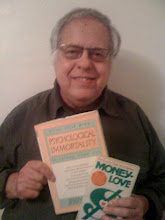When I visited South Africa in 1989, apartheid was still in effect and Nelson Mandela was still in prison. But signs of the coming changes were everywhere. Many of the seminars I led were attended by both white and black South Africans, something that would have been unheard of just a couple of years earlier.
I was most surprised at discovering how harsh the segregationist laws were. Having covered a great many stories about the civil rights movement in the U.S., I assumed the South African struggle was similar. But it was much more violent and dehumanizing. I was surprised when I found out that the black South Africans had been forced to move on very short notice when apartheid was first put into effect following World War II. They all lived in what were basically huge shanty towns twenty to thirty miles outside the cities of Johannesburg, Cape Town, and Durban. Blacks could not be in any of those cities after dark. I was told of several wealthy black South Africans who actually had luxurious homes in Johannesburg, but kept out of sight at night and had white friends or employees pretend to be the real owners of their homes.
Every public building, even supermarkets, had airport type security, including X-Ray conveyor belts for any packages being brought in. There were charts with photos of the kinds of bombs the African National Congress used in their war against apartheid. The man who brought me in was a minister as well as the owner of a motivational tape company. He was originally from Rhodesia, and his voice broke when he told me of his young assistant. She had died three years earlier when an ANC bomb went off in a drugstore she was shopping in.
The white government was just as violent, and I visited the township of Khayelitsha outside Cape Town. A woman friend who had emigrated to South Africa from California took me into the township, even though her Xhosa (the tribe best known for its "click" language) housekeeper warned us not to go. South African police had shot and killed a protestor there just two weeks earlier. But the residents came out in huge throngs to warmly greet us as we arrived.
Overshadowing all of this was Nelson Mandela. Though still in prison, he was undisputedly the leader of the black population. Everyone knew he would be released soon, as he was a few months later in 1990. And though he surely deserved the title "terrorist" in his early days, most people, black and white, seemed willing to give him the benefit of the doubt in terms of any future leadership role he might have. He more than proved that confidence was not misplaced.
It was election time in September, 1989, and the major excitement was focused on the Liberal Party, and their signs reading Vote Your Hopes Not Your Fears were to be found on every block. Though they won little power, it was considered a real breakthrough that they got some members elected to the South African parliament.
I was very impressed with the warmth with which I was greeted by white South Africans. Most of them seemed to really be working hard to convince Americans they were not the monsters being portrayed in the world media. In hospitality and friendliness they reminded me of the Pennsylvania Dutch people I had met over the years in my home state.
And the abundance present at the ubiquitous buffets all over was breathtaking, but that will have to wait for another post.
Jerry
For new prosperity ideas, check out my other blog at:
http://MoneyloveBlog.com
Sunday, December 8, 2013
Subscribe to:
Comments (Atom)
